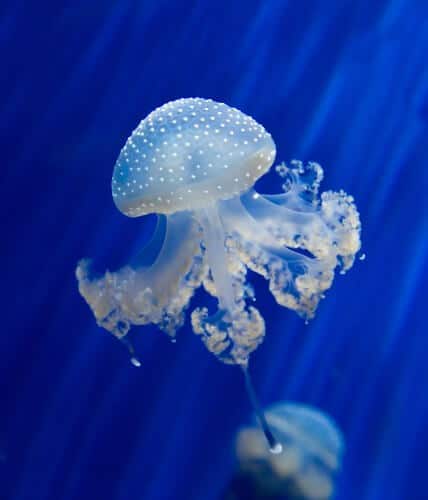A great level of complexity is required when we simulate mechanisms from one action scene, for example water, to another action scene, for example air. As in the example of imitating the bumps on the fin of the whale to improve the efficiency of wind turbines.

In biomimetic development, we usually transfer knowledge and imitate mechanisms, models and processes from nature for use in engineering and other applications. The imitation process usually refers to functionality in the same arena of action. In aviation, for example, the quieting mechanism of airplanes is an imitation of the breathing mechanism. A greater level of complexity is required when we simulate mechanisms from one scene of action, for example water, to another scene of action, for example air. As in the example of imitating the bumps on the fin of the whale to improve the efficiency of wind turbines. The latter is seen as a more complex analogy. Also in the example given here, there is an imitation of movement in water for air movement - this time inspired by the jellyfish.
Researchers from the Department of Applied Mathematics at New York University have developed an innovative aviation method, which may help further miniaturize flying robots for research, transportation management, intelligence gathering, and rescue and rescue operations.
Many efforts are invested in creating a tiny means of transportation in an attempt to imitate flying insects such as the flies, the dragonfly and more. One of the challenges is the instability of the movement of the fly's wings, for example. In order to stay in the air, the fly constantly monitors its surroundings. He senses every slight breeze, or an approaching predator, and reacts by changing his flight movements very quickly. To imitate the complex control of the fly in a mechanical engineering system and produce a tiny robot, a complex, heavy and relatively large control system is required.
The researchers in this study developed a flight mechanism that does not require a control system or feedback to maintain stability, and is similar to the swimming movement of the jellyfish, a movement that began in the ocean over 500 million years ago. The jellyfish, despite the lack of a brain, advances in the aquatic environment in a relatively stable and efficient movement without a sophisticated control system. Inspired by the movement of the jellyfish, the researchers developed a prototype consisting of four carbon fiber arms.
The developed prototype weighs only two grams, and is only eight centimeters long. The four carbon fiber arms that make up the "wings" of the robot move in a sort of rhythm similar to the pulsations of the jellyfish's arms in the water, and the resulting movement is vertical and stable. The carbon fiber arms are arranged like the petals of a flower. The researchers found that the device can take off and fly in a certain direction.
"The Flying Jellyfish"
In addition to the fact that the researchers proved that the device is stable in flight, it was found that the size of the device depends mainly on the size of the engine and its weight. It's still a limited prototype model, it's still connected to an external power source, it lacks auto-navigation, and it's not yet remotely controllable. However, proving the principles of movement on this model encourages the development of a more advanced and complex model based on these principles.

3 תגובות
Lol
Depends on what you call nature what with extraterrestrial 😛
People are also a problem (if not the problem)
There is nothing like nature
Also most (if not all) of our problems are in nature…. 🙂
Most (if not all) of the answers to our problems are found in nature
Nature is a great evolutionary "journey" and it adapts itself to the necessary conditions
So why not take from a specialist of several hundred million years for our benefit